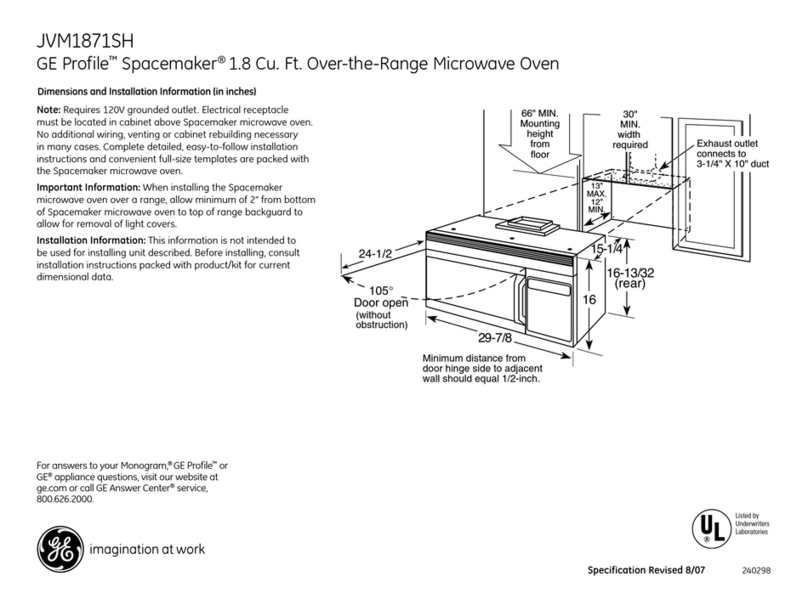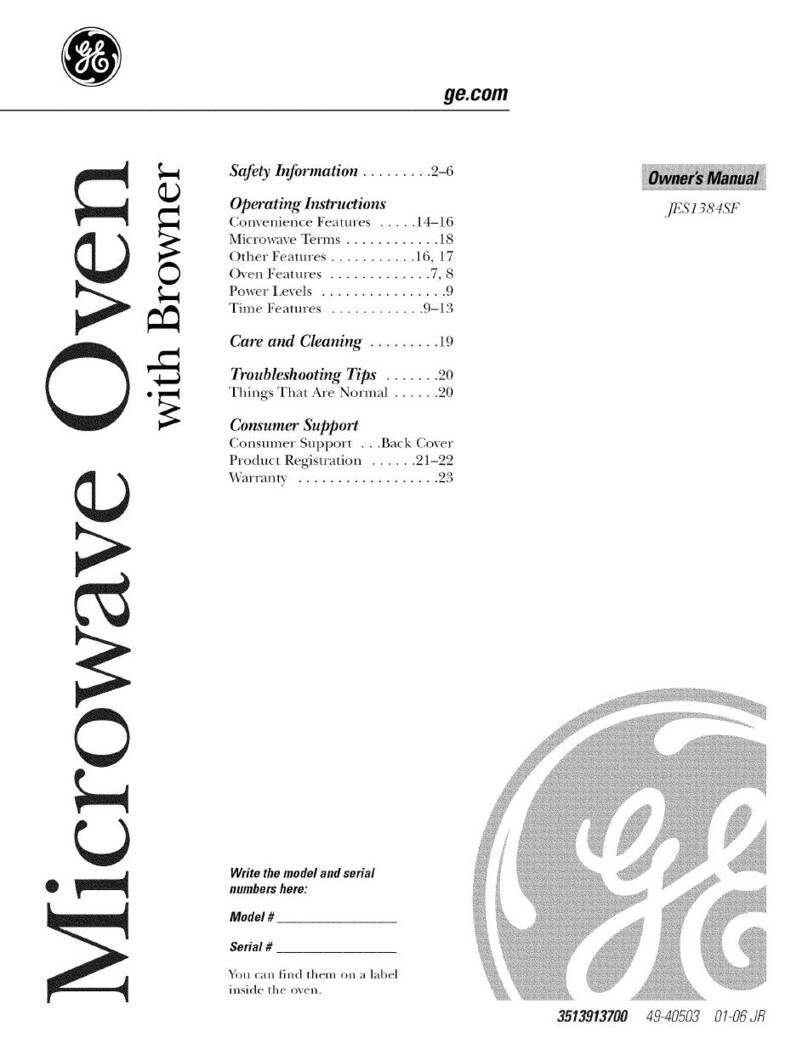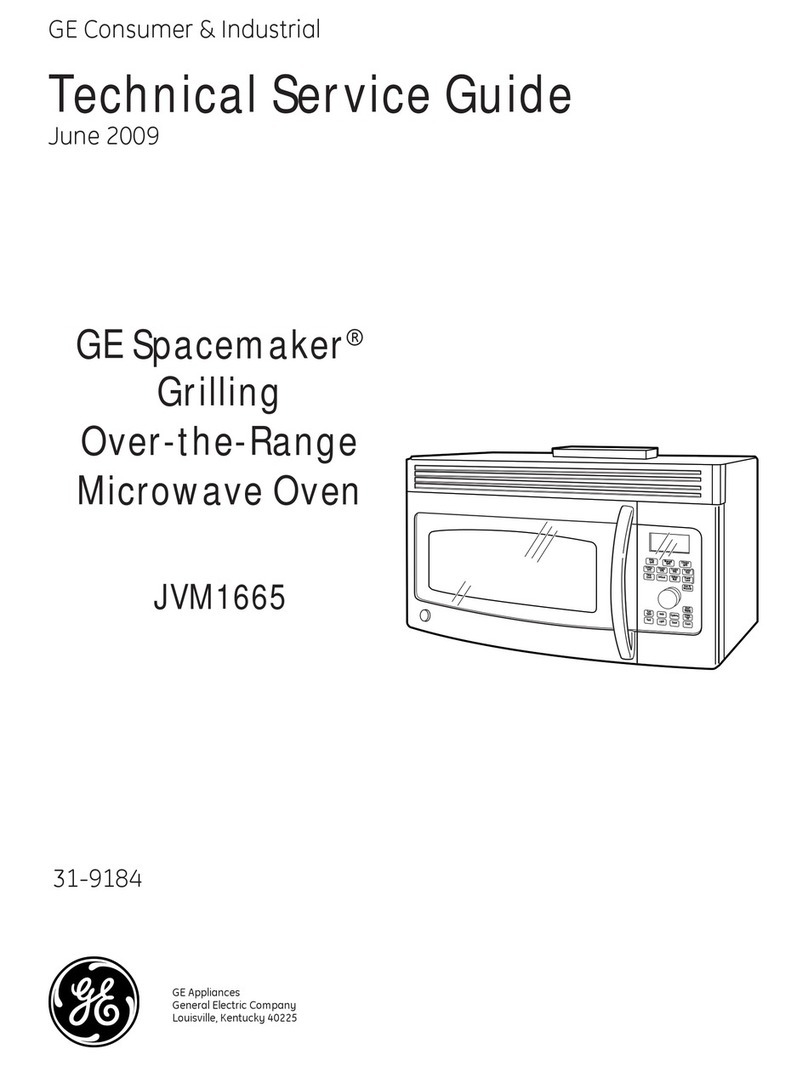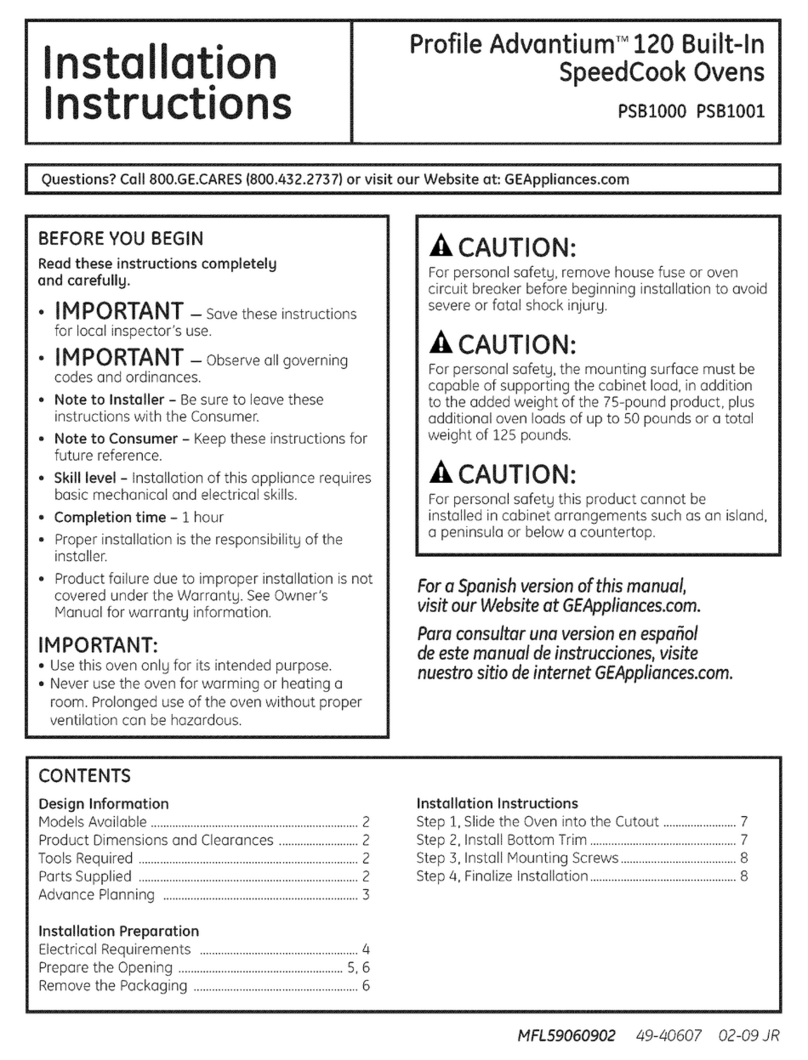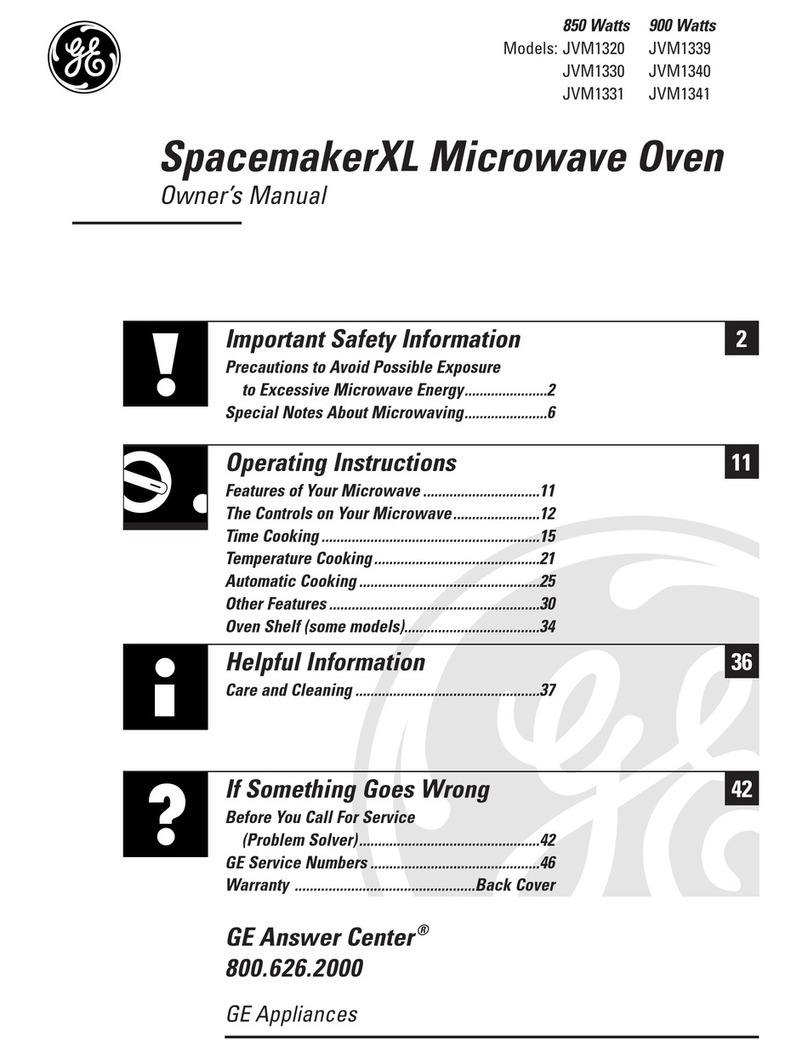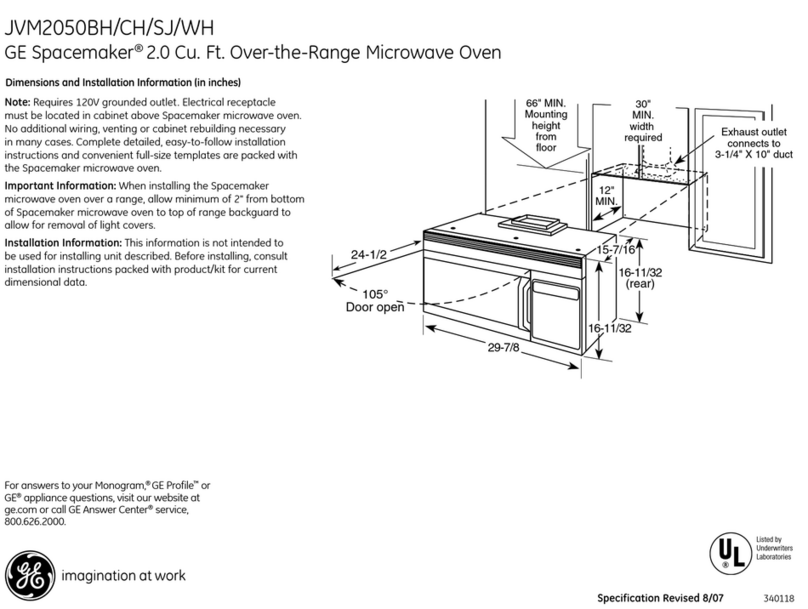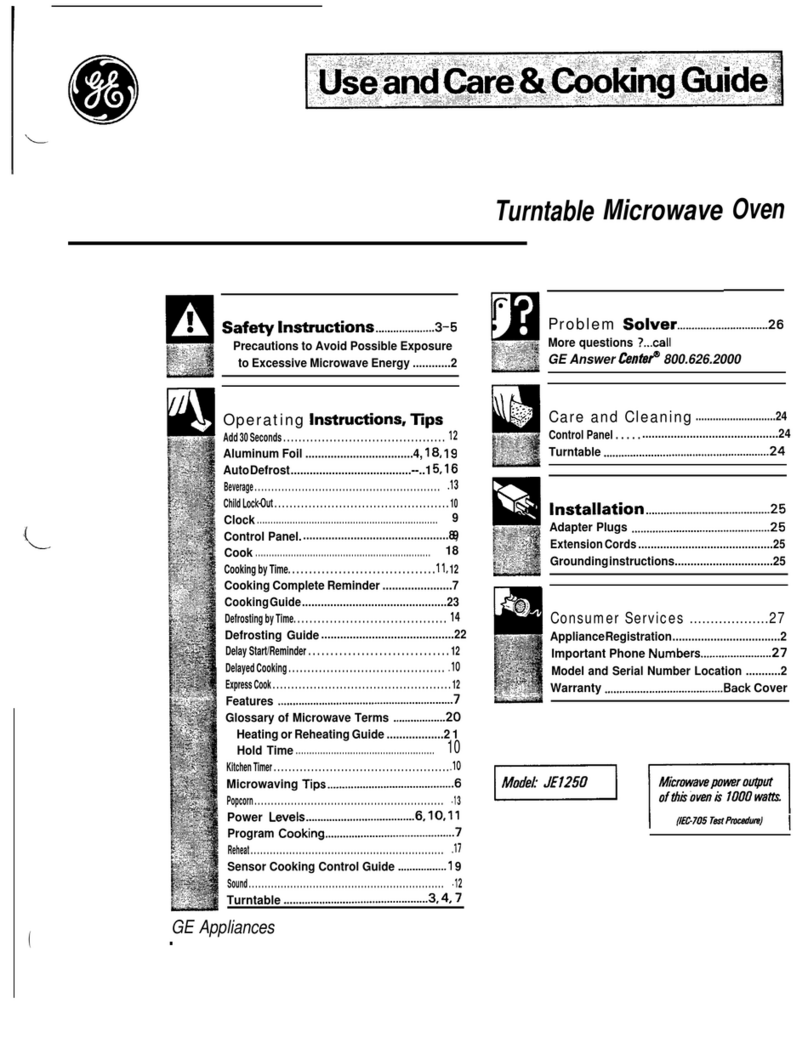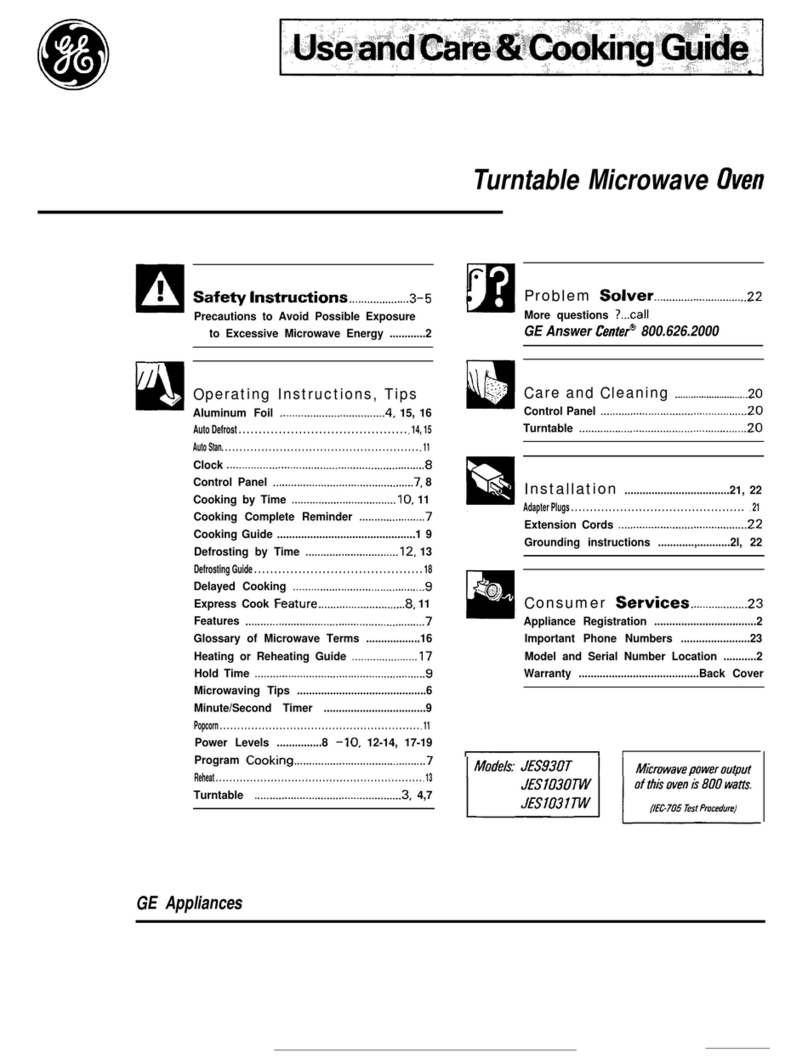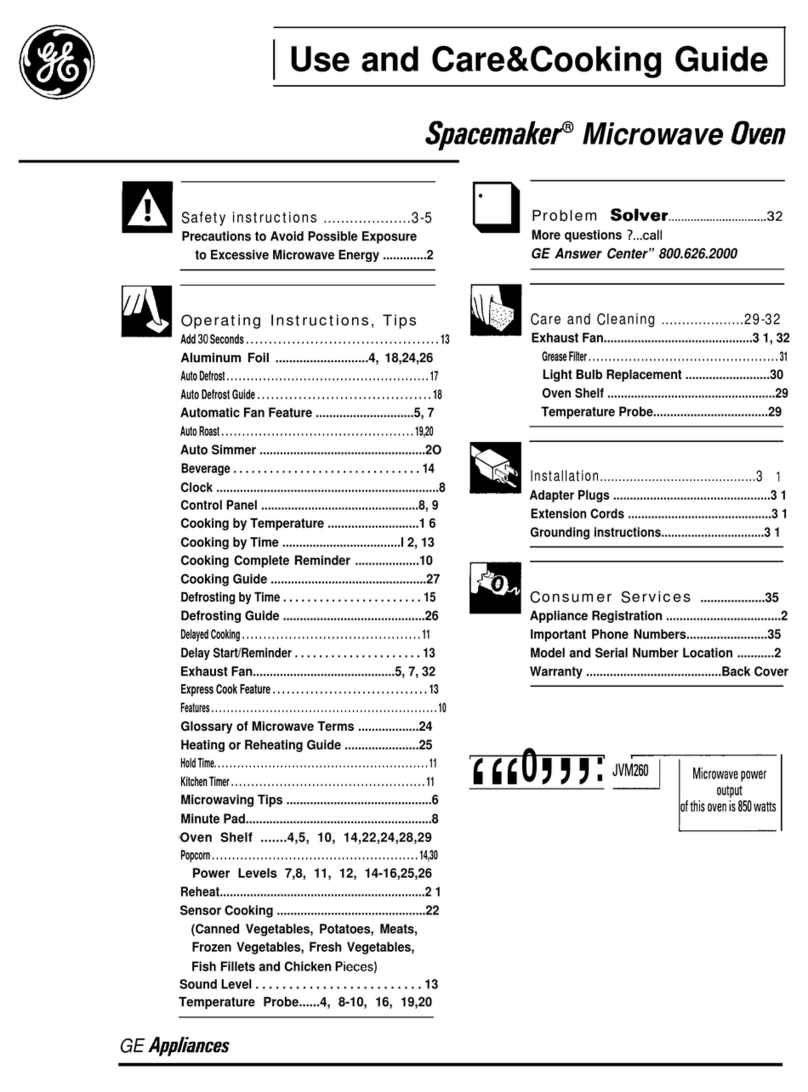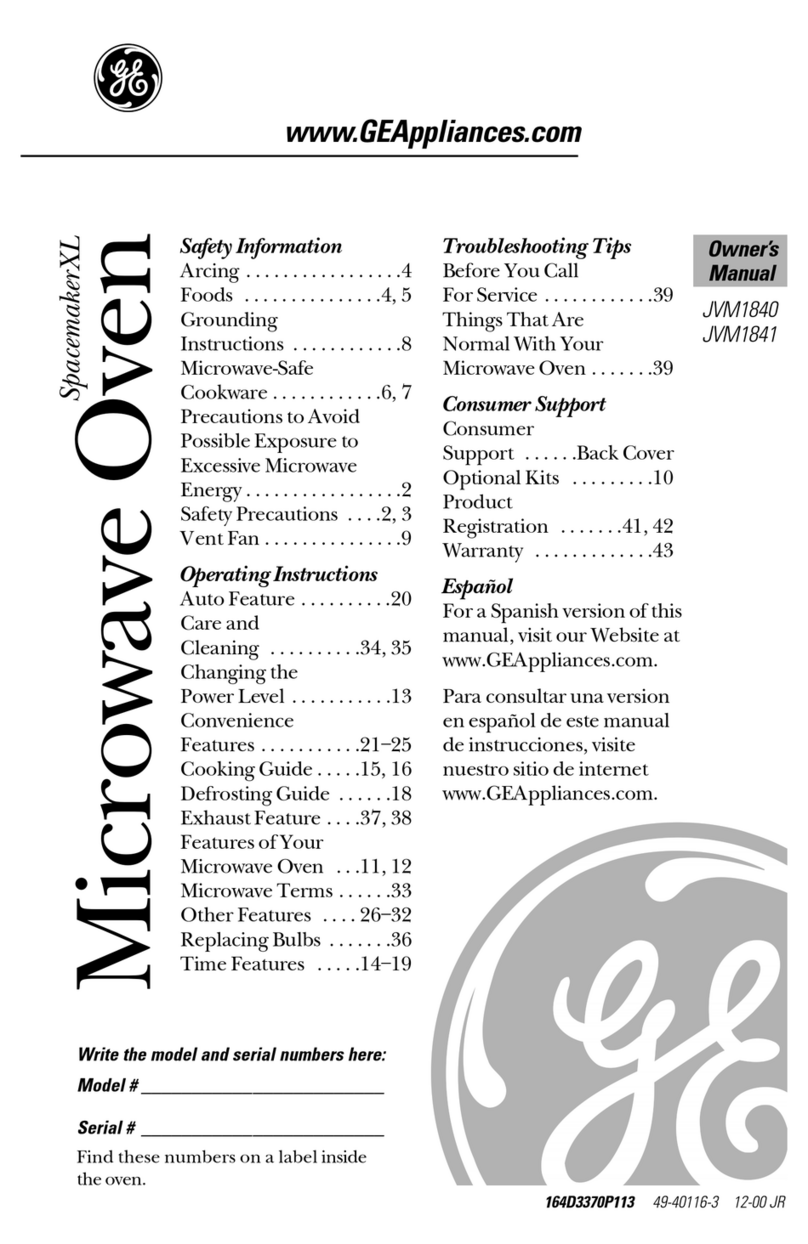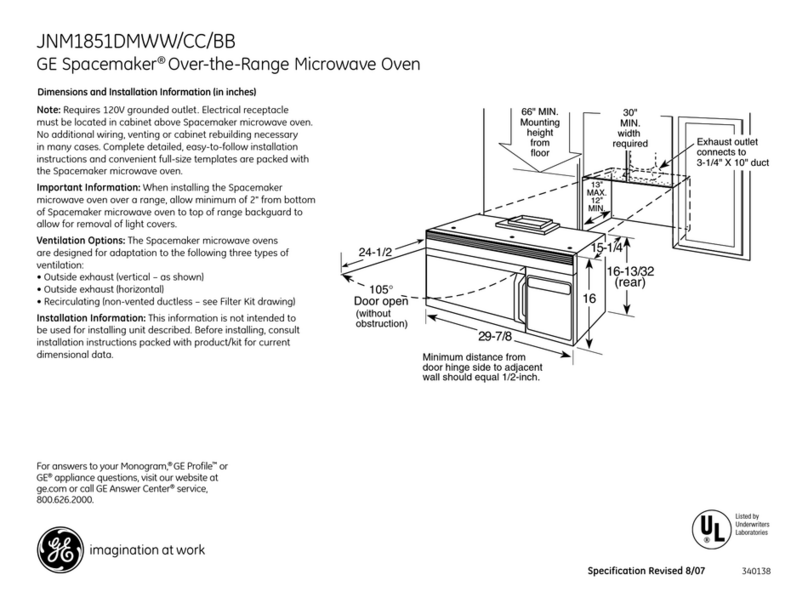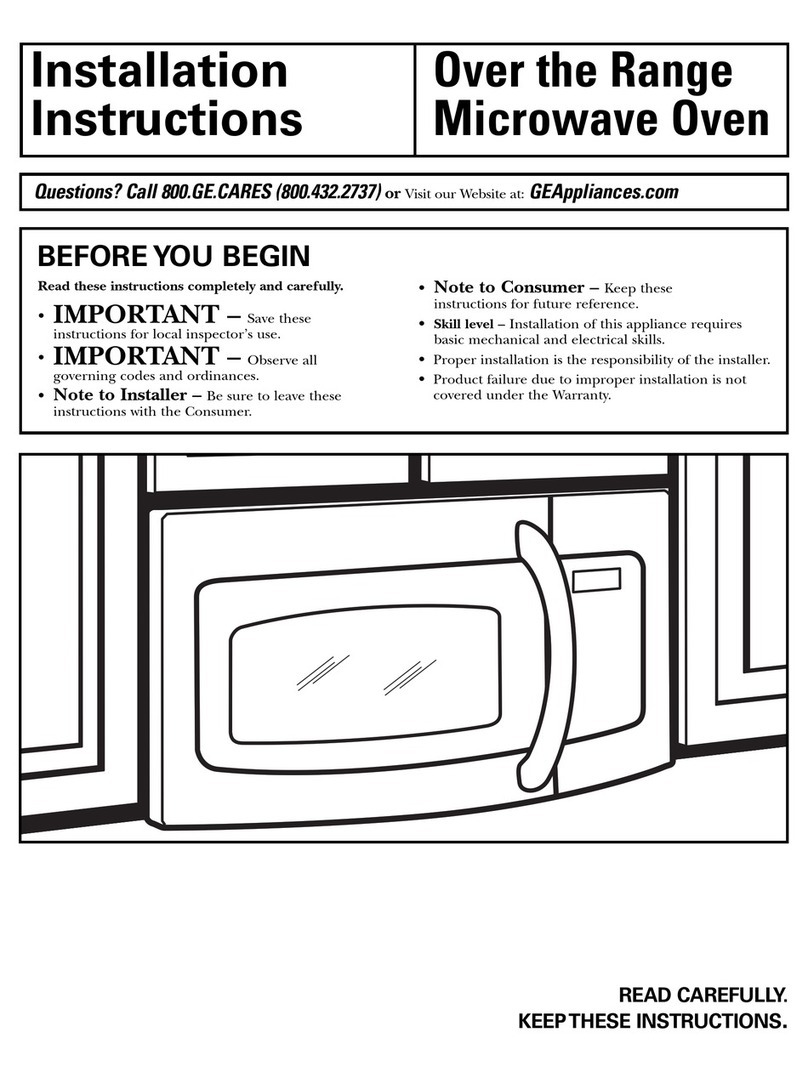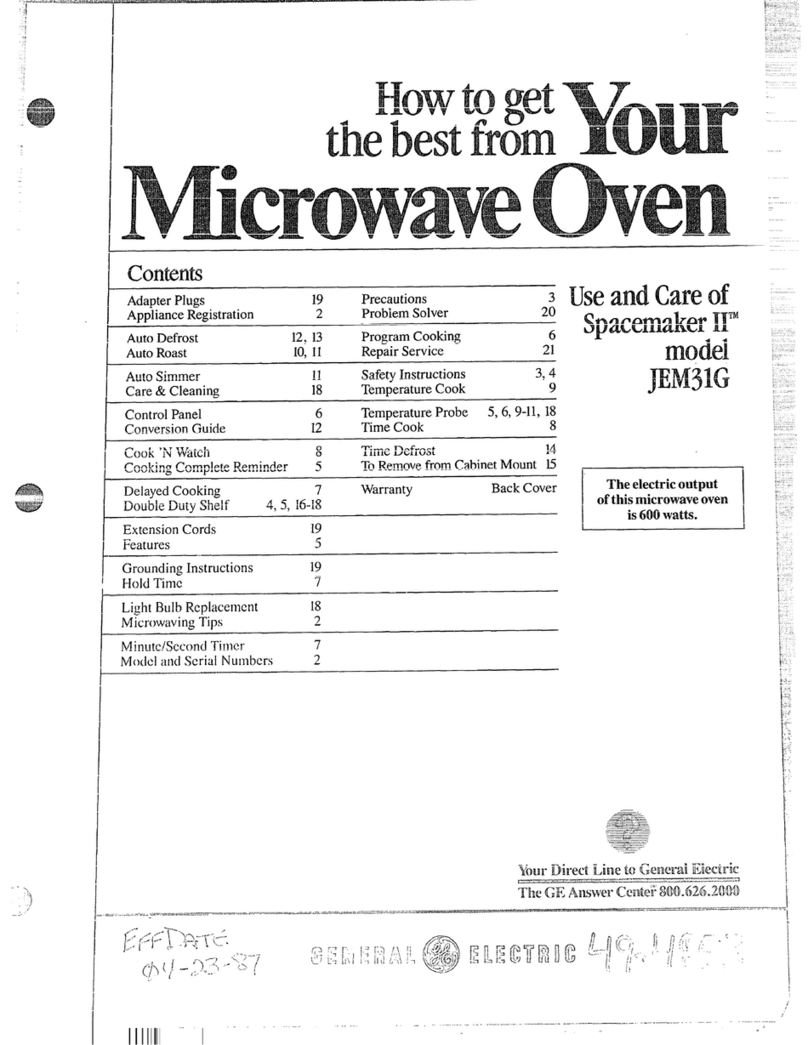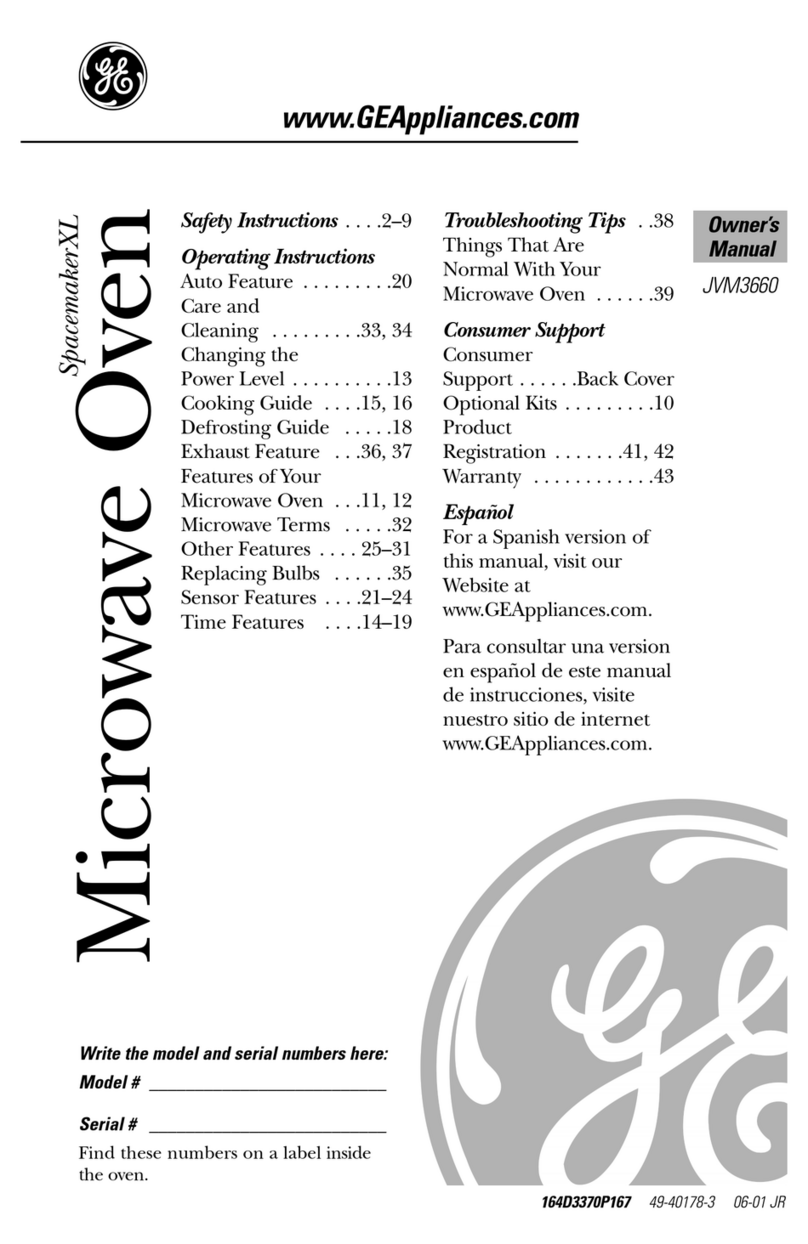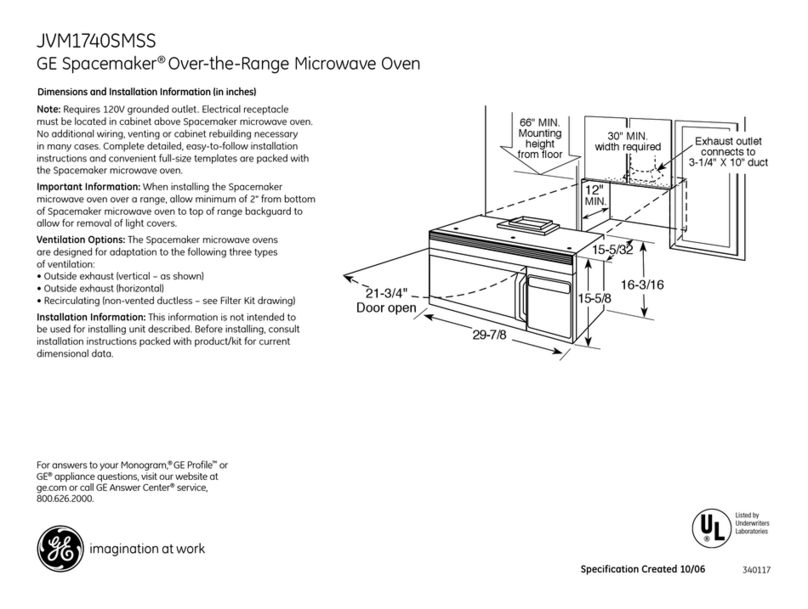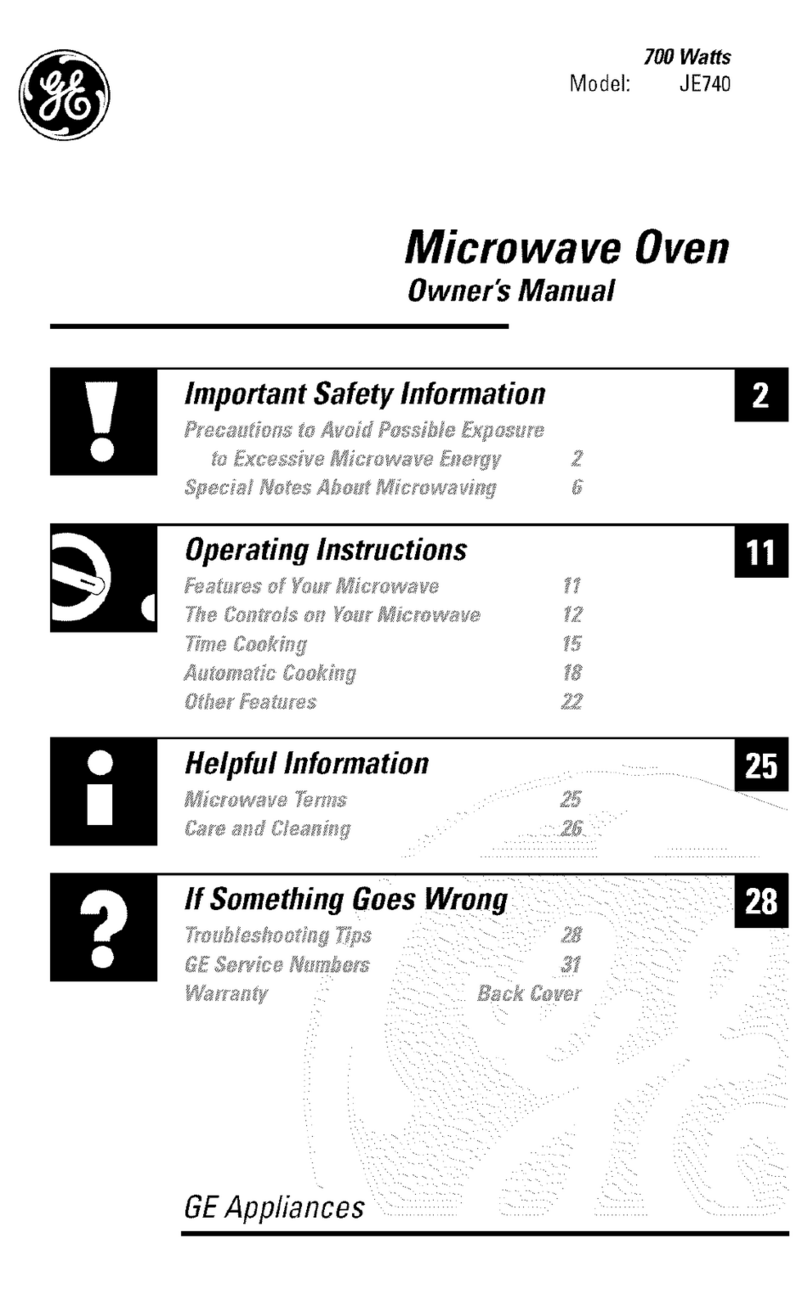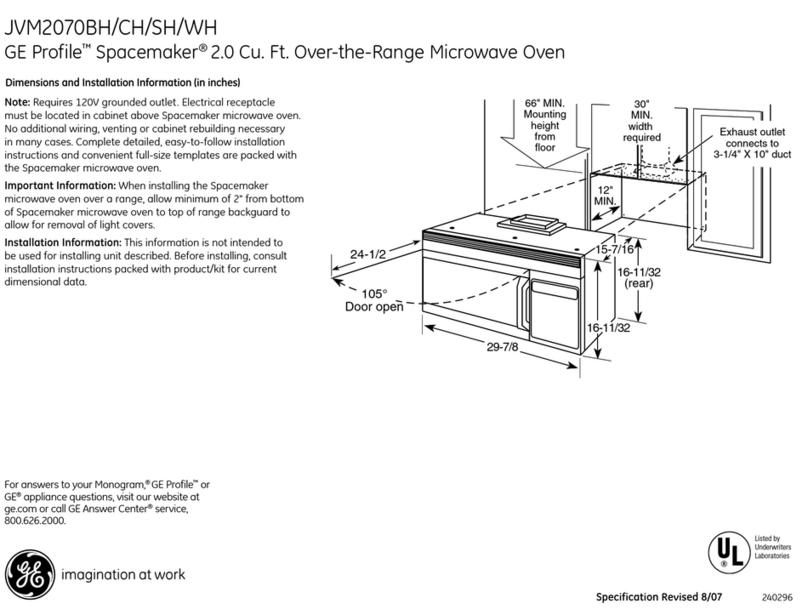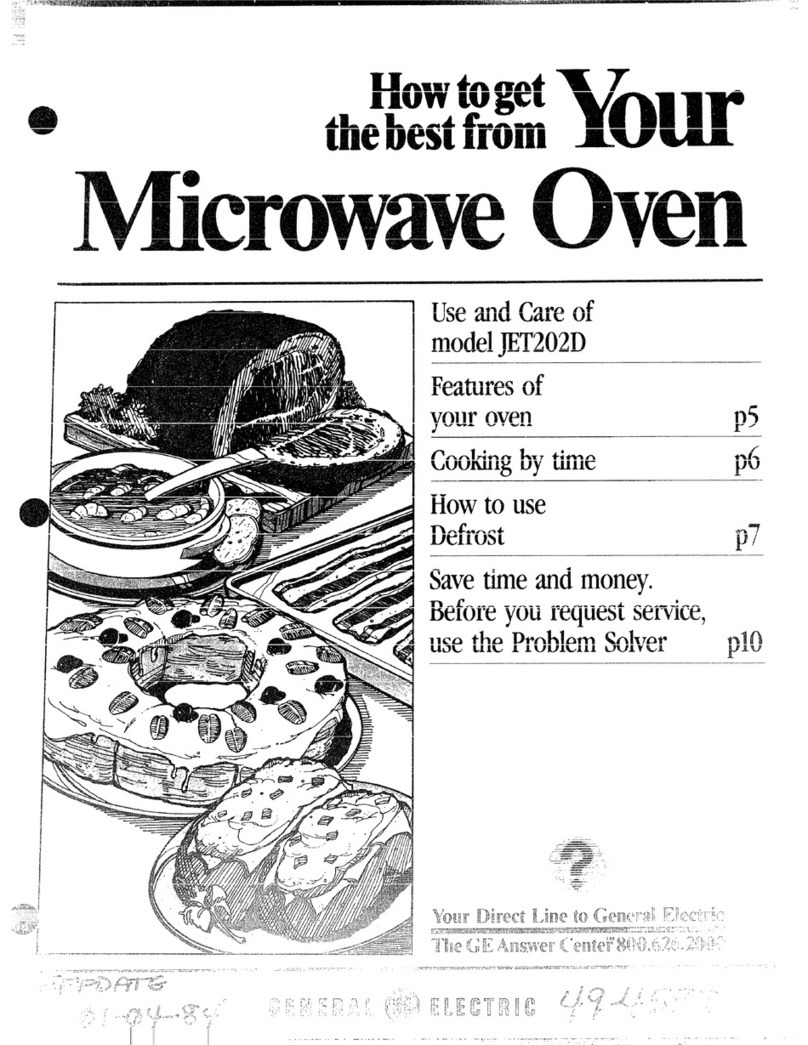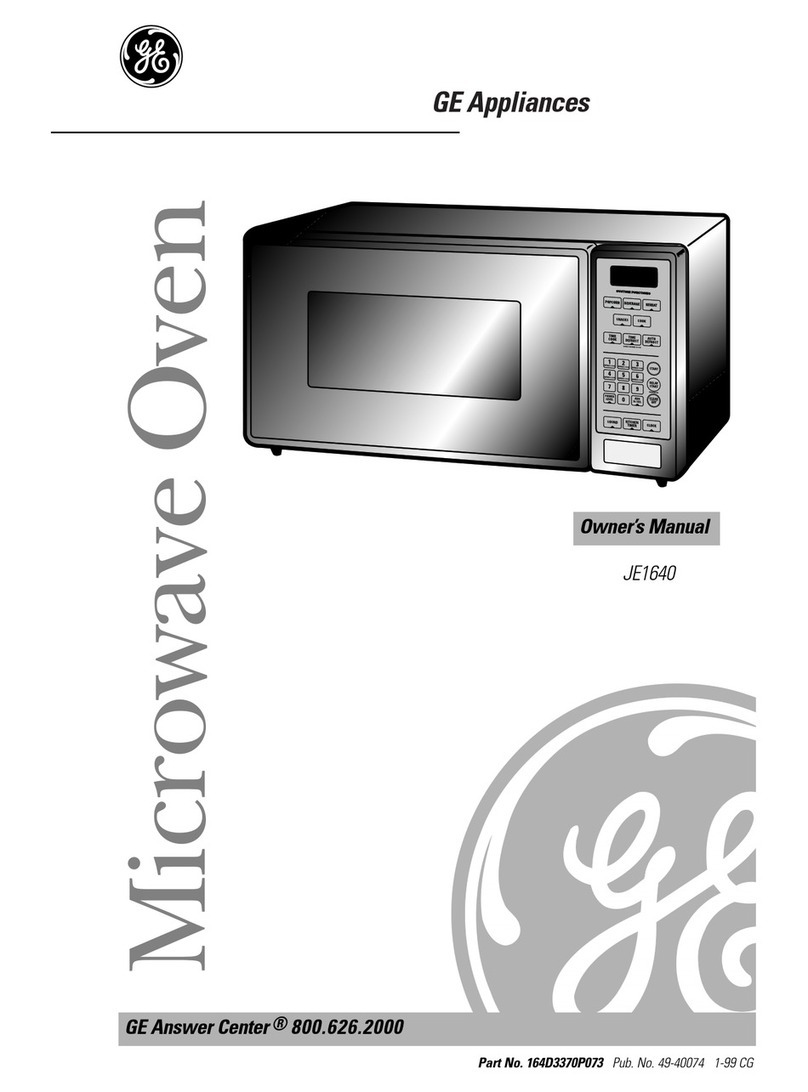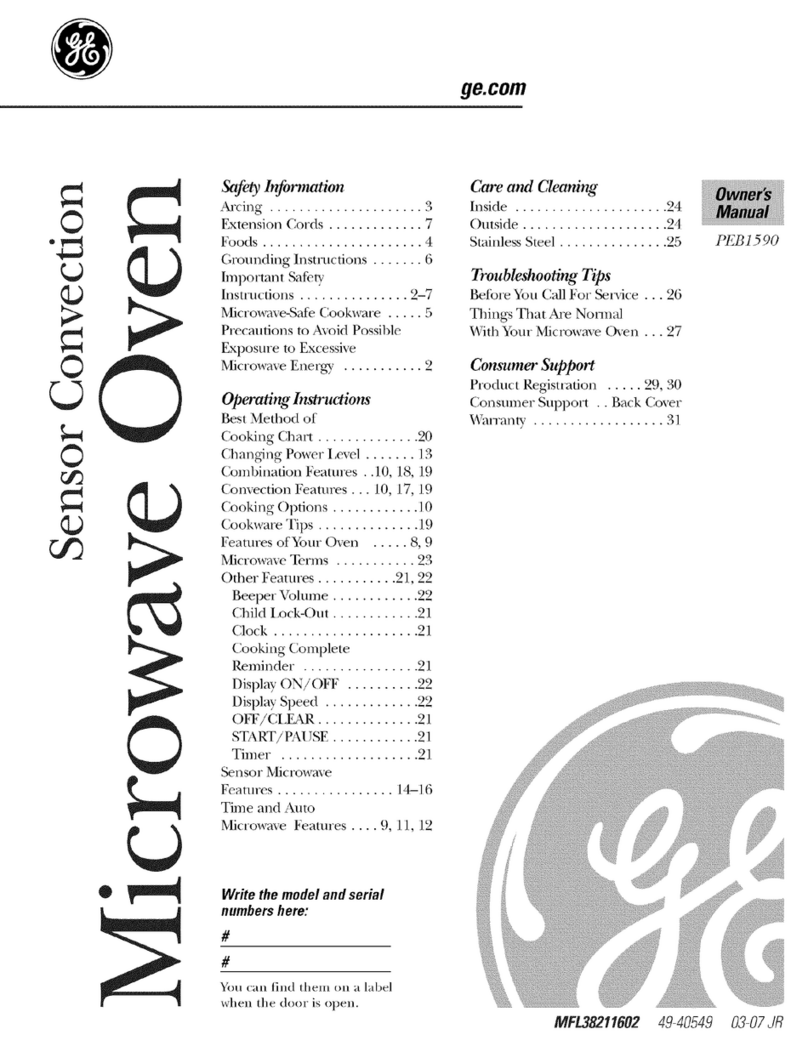~ORTANT
SA~W
~STRUCTIONS
(continued)
●
Do
not
touch
he~ting
elementa
or interior surface of
oven.
These
surfaces
may
be
hot
enough
to
burn
even
though they are dark
in color. During and after
use,
do
not touch,
or
let cloting
or
other
flammable materials contact any
interior area of the
oven;
allow
sufficient time for cooling,
first.
Potentially hot surfaces include
oven vent openings
and
surfaces
near the openings, crevices
around
the oven door and
the
edges of the door window.
Remember:
The
inside surface
of
the
oven maybe hot when the
door is opened.
●
When cooking
pork,
follow
the directions exactly and always
cook the meat to an
intern#
temperature of at least
170°F.
This assures that, in the remote
possibility that trichina
may
be
present in the meat, it will be
killed and meat will be safe
to eat.
Microwave Oven:
●
Read and
foHow
the specific
“PRECAUTIONS
TO
AVOID
POSSIBLE EXPOSU~ TO
EXCESSIVE MICROWAVE
ENERGY” found on page 2.
●
To
reduce
the risk of
fire
in
the
oven cavity:
—Do not
overeook
food.
Carefully attend appliance if
paper, plastic or other combustible
materials are placed inside the
oven to
facili@te
cooting.
—Remove wire twist-ti~ from
paper or plastic bags before
placing bags in oven.
—Do not use
yonr
microwave
oven to dry newspapers.
—Do not use
recycled
paper
producti. Recycled paper towels,
napkins and wax paper can
contain metal flecks which may
4
cause arcing or ignite. Paper
products containing nylon
or
nylon filaments should be
avoided, as they may also ignite.
—Do not pop popcorn
in
your
microwave oven unless in a
special microwave popcorn
accesso~
or unless you use
popcorn labeled for use in
microwave ovens.
—Do not overcook potatoes.
They could dehydrate and catch
fire, causing
damage
to
your oven.
—Do not operate the oven while
empty to avoid damage to the
oven
and the danger of fire. If
by accident the oven should run
empty
a minute or two, no harm
is
done. However, try to avoid
operating the oven empty
at
all
times—it saves energy and
prolongs life of the oven.
●
Do
not
use the oven for storage
purposes. Do not leave paper
products, cooking utensils or food
in the oven when not in use.
*
timaterials
inside the oven
should ignite, keep
oven
door
closed, turn oven off, and
disconnect the power cord, or
shut off power at the fuse or
circuit breaker panel.
●
Some products such as whole
eggs and sealed containers—for
example, closed glassjars-will
explode and should not be heated
in this oven.
* See door surface cleaning
instructions in the Care and
Cleaning section(s) of this book.
*
Don’t defrost frozen beverages
in narrow-necked bottles
(especially carbonated beverages).
Even if the container is opened,
pressure
can
build up, This can
cause the container to burst,
possibly resulting in injury.
*
Use metal only as directed in –
this book and the cookbook.
Foil strips as used on meat roasts
are helpful when used as shown
in cookbook.
TV dinners
maybe microwaved
in foil trays less than 3/4” high;
remove top foil cover and return
tray to box. When using metal in
microwave oven, keep metal
(except for DOUBLE
DUTYTM
shel~
at least 1 inch away from
sides of oven.
●
Cookware may become hot
because of heat transferred from
the heated food. Pot holders may
be needed to handle the cookware.
●
Sometimes, the oven floor
an
become too hot to touch. Be
careful touching the floor during
and after cooking.
●
Do not use a thermometer in
food you are microwaving unless
the thermometer is designed or –
recommended for use in the
microwave oven.
●
Remove the temperature
probe from the oven when not
in use. If you leave the probe
inside the oven without inserting
it in food or liquid, and turn on
microwave energy, it can create
electrical arcing in the oven, and
damage oven walls.
●
Avoid heating baby food in
glass jars, even without their lids;
especially meat and egg mixtures.
c
Do not
boti
eggs in a microwave
oven. Pressure will build up inside
the egg yolk and will cause it to
burst, possibly resulting in injury.
●
Foods with unbroken outer
“skin” such as potatoes, sausages,
tomatoes, apples, chicken livers
and other giblets, and egg yolks
should be pierced to allow steam
–
to escape during cooking.
